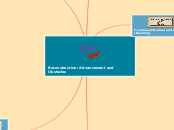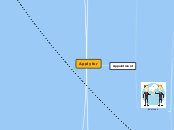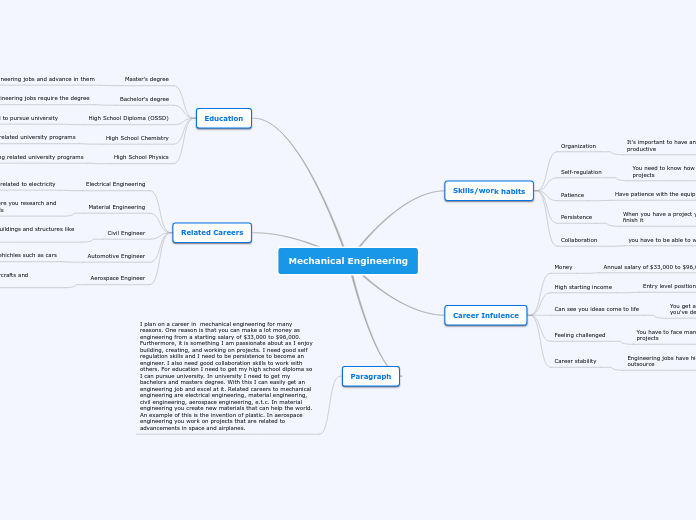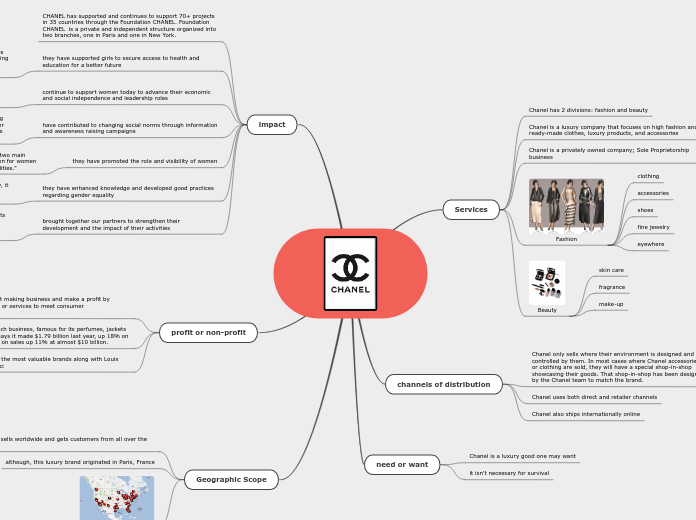Reconstruction: Advancement and Obstacles
Jim Crow and the KKK
(Primary Sources)
1. Students will be able to explain through written work, Jim Crow Laws and racial segregation’s effect on the opportunities of freedmen.
2.Students will be able to discuss with their classmates, the rise of the Ku Klux Klan and the Klan’s effect on society.
Formative: Questions and answers. The teacher will ask questions at the beginning of the lesson to gauge students prior knowledge.
Formative: The teacher will be monitoring progress and assessing students by walking around the classroom and listening to discussions. The teacher will also be assessing whether students are having difficulty analyzing the primary sources.
Summative: The teacher will be assessing students by examining the content of the students' poster. The teacher will also combine the content with students' participation in the poster presentation. The teacher will be giving a grade to students on their poster presentation.
Teacher Activity: The teacher will be asking students questions on the oppression of African American's during reconstruction, and ask students to define key Vocabulary.
Teacher Activity: The teacher will place students into groups, and provide students with a poster construction paper and primary sources. The teacher will give students directions and a brief summary of each primary source. The teacher will walk around the classroom to assist students and answer questions.
Student Activity: Students will volunteer and be prepared to think about the questions and respond to the teacher.
Student Activity: Students will be working in group to read and analyze primary sources provided by the teacher. Students will engage in discussion and communicate their analysis of the primary sources. Students will be using the primary sources to explain with evidence how African Americans were oppressed or discriminated against. Students will write down a total of 8 analysis on their poster, and prepare to present to the entire class their analysis.
Reconstruction Acts
(Simulation Game)
1. Students will be able to identify the meaning of the Thirteenth, Fourteenth, and Fifteenth Amendment to the Constitution.
Formative: Questions and Answers – The teacher will assess students’ prior knowledge during the lesson introduction by asking them questions about their analysis of the political cartoon. The teacher will provide immediate feedback after students’ response.
Formative: Progress Monitoring – The teacher will be monitoring student progress during the photo analysis game by observing what photos students have trouble analyzing. Based on how many students receive the wrong answers on a photo, the teacher will adjust instruction to elaborate more on the photo or the amendment students are having difficulty with. The teacher will provide immediate feedback if most students received the right answer on a photo. The teacher will elaborate more on the photo if a majority of students received a wrong answer on a particular photo.
Teacher Activity: The teacher will be opening the lesson by having students analyze three political cartoons relating to the 13th, 14th, and 15th Amendment, to gauge prior knowledge and lead into the photo analysis game. The teacher will call on students to provide their analysis.
Teacher Activity: The teacher will be facilitating the photo analysis game. The teacher will present a photo on the projector. After ten seconds the teacher will cover the photo. The teacher will stop student collaboration after thirty seconds. The teacher will provide points to teams that received the correct answer.
Teacher Activity: The teacher will review with the students why the photo resembles closest with the 13th, 14th, and 15th Amendment.
Student Activity:Students will be analyzing the three political cartoons on the projector. Students will be called on to provide their analysis.
Student Activity:Students will be analyzing political photos on the projector for ten seconds. They will then have thirty seconds to collaborate with their group. Students will write down on their small white boards whether that photo matches with the 13th, 14th, and 15th Amendment. After thirty seconds, students will stop and raise their whiteboards up.
Student Activity:Students will be explaining to the teacher their analysis of the photo, and their reason for choosing the amendment.
Reconstruction (Discussion)
Students will be able to analyze the connection between Reconstruction and the Thirteenth, Fourteenth, and Fifteenth Amendment through primary source readings and a discussion activity.
Formative Assessment – The teacher will be assessing students by using questions and answers during the lesson introduction. The teacher will be assessing prior knowledge by asking students aspects and meaning of the 13th, 14th, and 15th Amendment. The teacher will provide immediate feedback, and provide an elaboration or the correct answer if students do not answer correctly.
Formative Assessment – The teacher will be assessing students based on their group responses to the questions. The teacher will provide immediate feedback, asking students follow up questions if student answers are lacking in detail. The teacher will also collect the worksheets at the end of the day and assess student’s answers.
Students will be provided primary source readings. Students will read and utilize the primary source readings to answer the second set of critical thinking questions. Students will stand up, and each student in a group will respond to a question. Students will answer follow up questions from the teacher. Other students will be asking other groups questions or create debate on areas they do not disagree. The teacher will ask critical thinking questions and create debate by playing devil’s advocate.
Students will be working in groups to answer a set (4 questions) of critical thinking questions. Students will be engaging in discussion with their classmates. Each student in a group will be standing up and responding to one question out loud. Students will answer follow up questions from the teacher.
Students will be called on to define key vocabulary words of the day.
Students be called on to utilize their prior knowledge from the previous day’s lesson to respond to the teacher’s question on the aspects of the 13th, 14th, or 15th Amendment.
The teacher will hand out primary source readings to groups. Students will be called on to answer a second set (4 questions) of critical thinking questions, using the primary sources. Students will stand up and provide their responses to the teacher. The teacher will ask follow up questions to facilitate discussion and gauge higher order thinking. The teacher will go around the class and have each group answer the same questions or add to the answers already presented.
The teacher will use flexible grouping to group students into 4. The teacher will provide students with a set of critical thinking questions (4 questions) for groups. The teacher will utilize the Goldfish Bowl strategy and have the group stand up to present their responses. The teacher will ask follow up questions to facilitate discussion. The teacher will go around the class and have each group answer the same questions or add to the answers already presented. Other students will be asking other groups questions or create debate on areas they do not disagree. The teacher will ask critical thinking questions and create debate by playing devil’s advocate.
The teacher will call on students to define key vocabulary words, and write the word and definition on the board.
The teacher will introduce the lesson by reviewing the lesson from the previous day. The teacher will ask students prior knowledge questions on the aspects of the 13th, 14th, or 15th Amendment.
Freedmen's Bureau and Jim Crow
(Reading)
1.Students will be able to describe the Freedmen’s Bureau’s role in supporting former slaves during Reconstruction.
2. Students will be able to explain through written work, Jim Crow Laws and racial segregation’s effect on the opportunities of freedmen.
Formative: The teacher will perform an entry-level assessment during the introduction portion of the lesson. The teacher will assess student understanding based on the verbal answers they provide after their think-pair-share activity.
Formative: The teacher will also assess students when walking around the classroom and interacting with students during their jigsaw activity. The teacher will also assess students based on their review question responses (Verbal) at the lesson closure.
Summative: The teacher will assess student knowledge by reviewing student’s homework assignment. Students will write a summary of their choice at the bottom of their Cornell Notes that describe the role of the Freedmen’s Bureau in supporting former slaves, or how Jim Crow laws suppressed opportunities for people of color.
Student Activity: Students will reflect on the lesson by completing a summary for homework.
Student Activity: Students will work in groups to complete a concept map graphic organizer.
Student Activity: Students will read along or out loud with the teacher during the textbook reading. While reading, students will write down key vocabulary and events in their Cornell Notes.
Student Activity: Student will be working in a think-pair-share activity to analyze a BrainPop.
Teacher Activity: Teacher will be walking around the classroom during the group activity and interact with students to provide clarity, guidance, elaboration, or support.
Teacher Activity: Teacher, along with students, will be reading the textbook out loud to the class.
Movement of Former Slaves
(Lecture)
1. Students will be able to identify the push and pull factors
in the movement of former slaves to the West and Cities in the North.
2. Students will be able to describe the role of the Buffalo Soldiers during Reconstruction.
Assessment: Formative - Students will be answering questions throughout the lecture, displaying their knowledge of reasons for former slaves movement to the West and North, and the role of Buffalo Soldiers.
Summative - Students will write a reflection describing their personal feeling why moving to the West, North, or becoming a Buffalo Soldier is important to them if they were a former slave.
Student Activity: Student will complete a written reflection for homework, reflecting on the reasons for migration to the North and West, and the Buffalo Soldiers.
Student Activity: Student will complete a guided notes assignment during the lecture.
Student Activity: Students will be working with their partner and group in discussing questions presented by the teacher. Students will respond to critical-thinking questions asked by the teacher.
Teacher Activity: Teacher will give a PowerPoint lecture on the migration of former slaves during Reconstruction.









